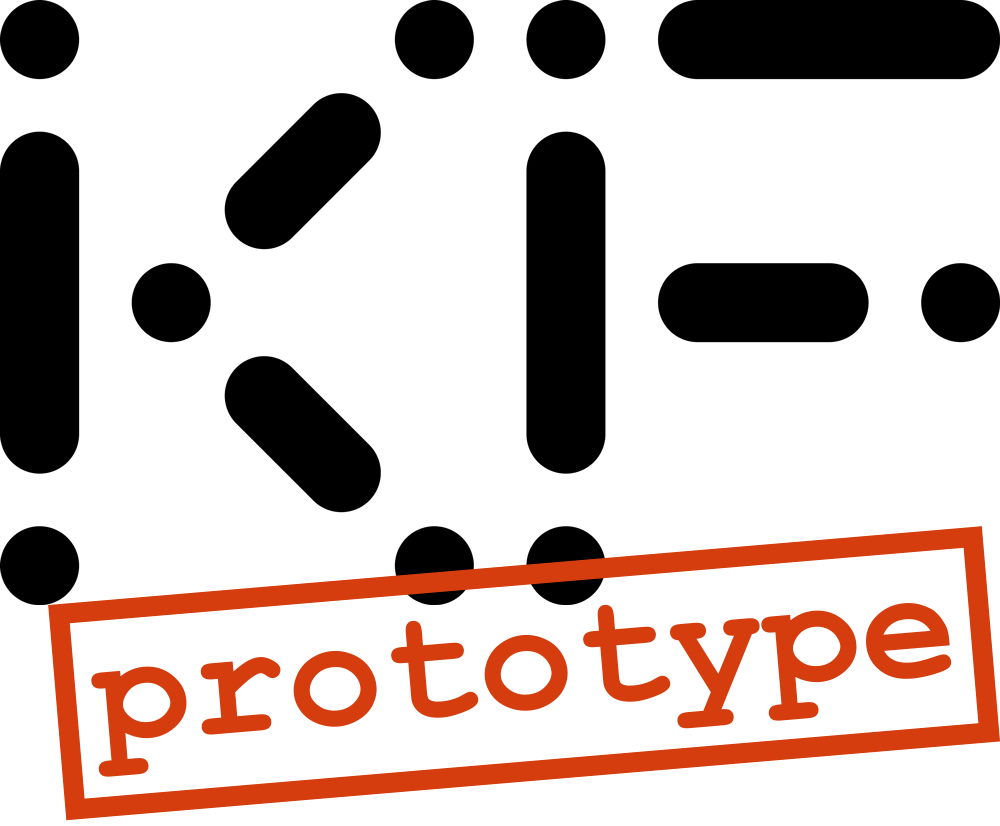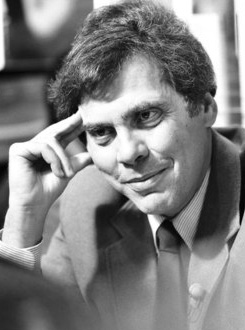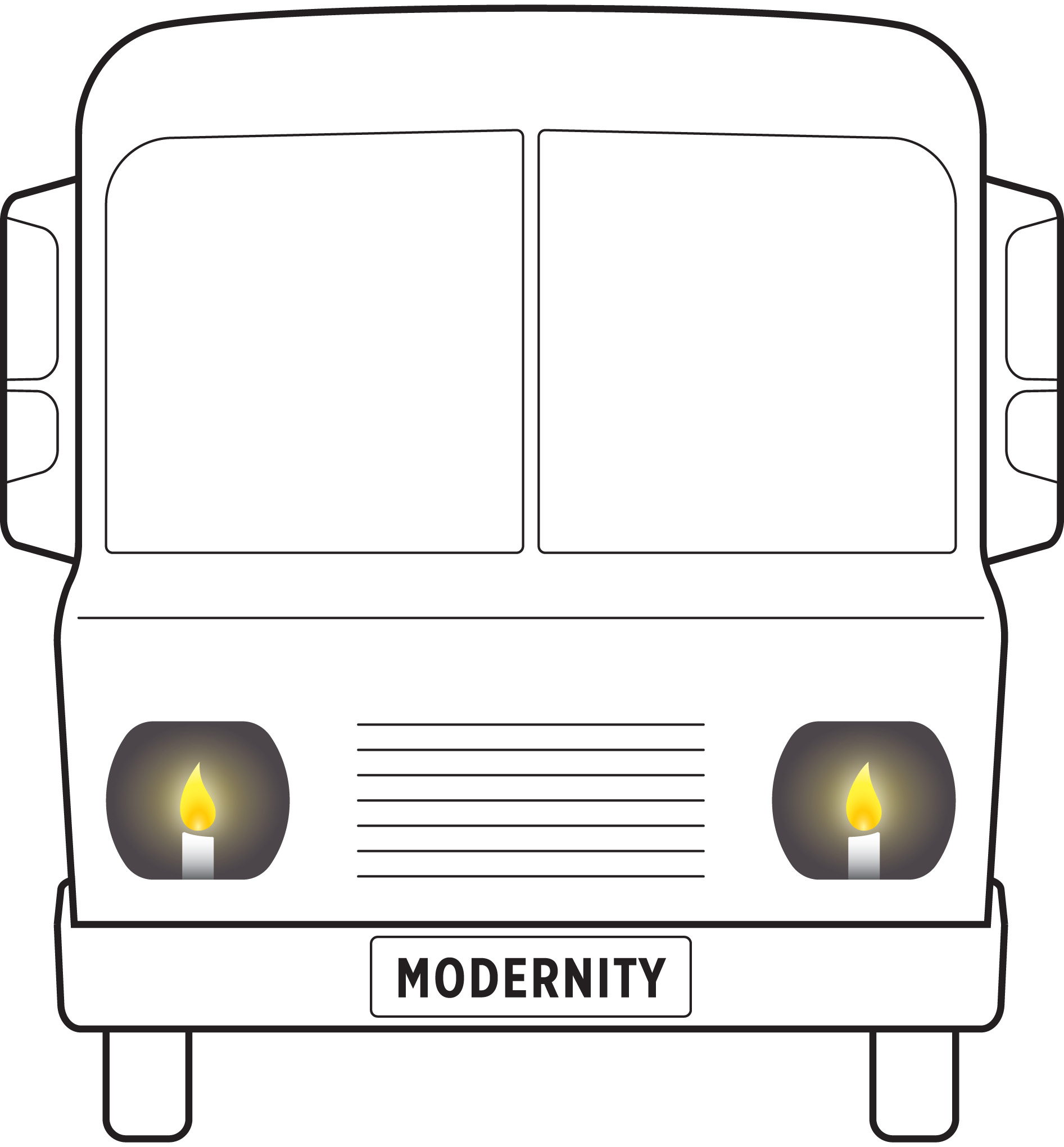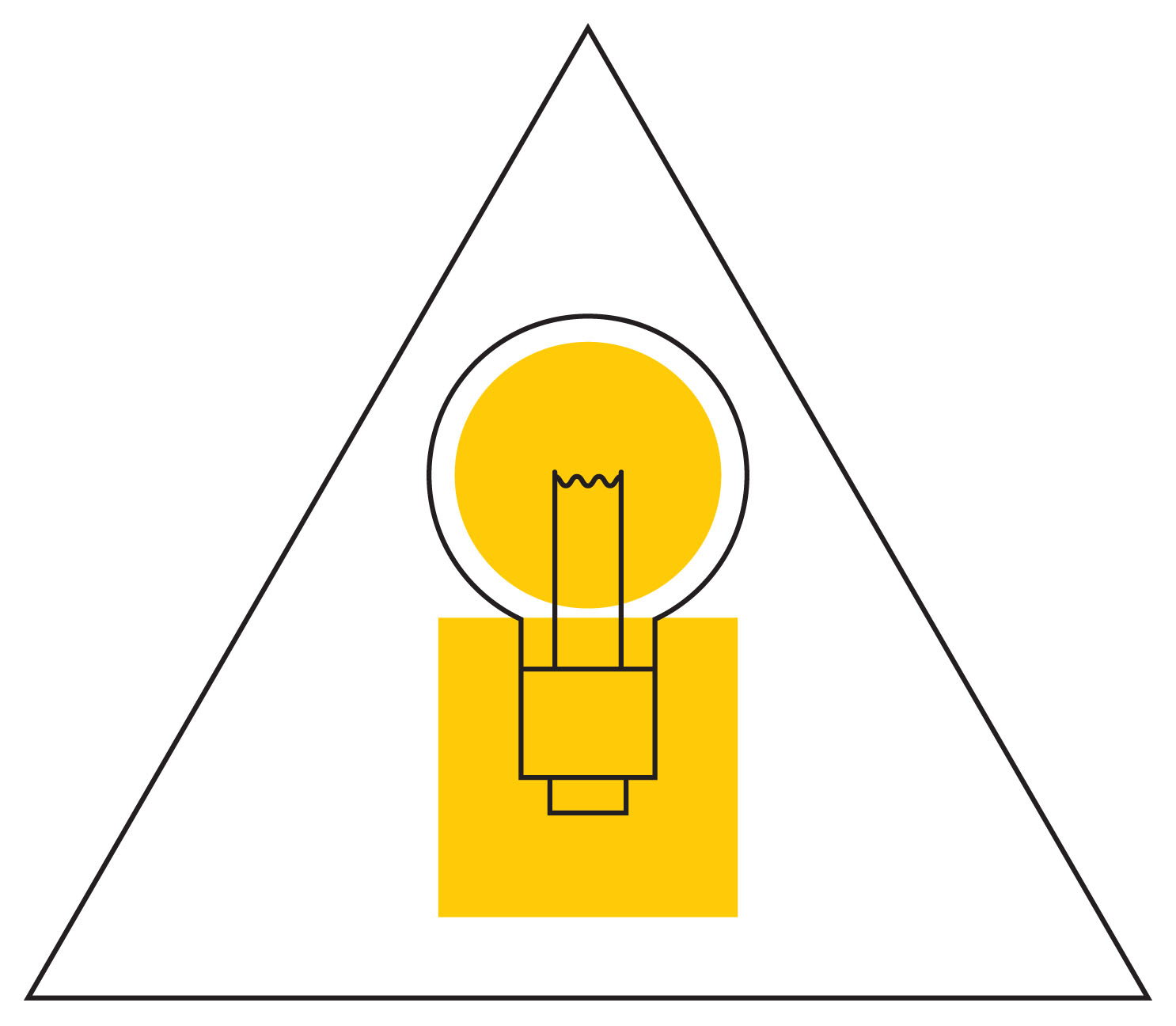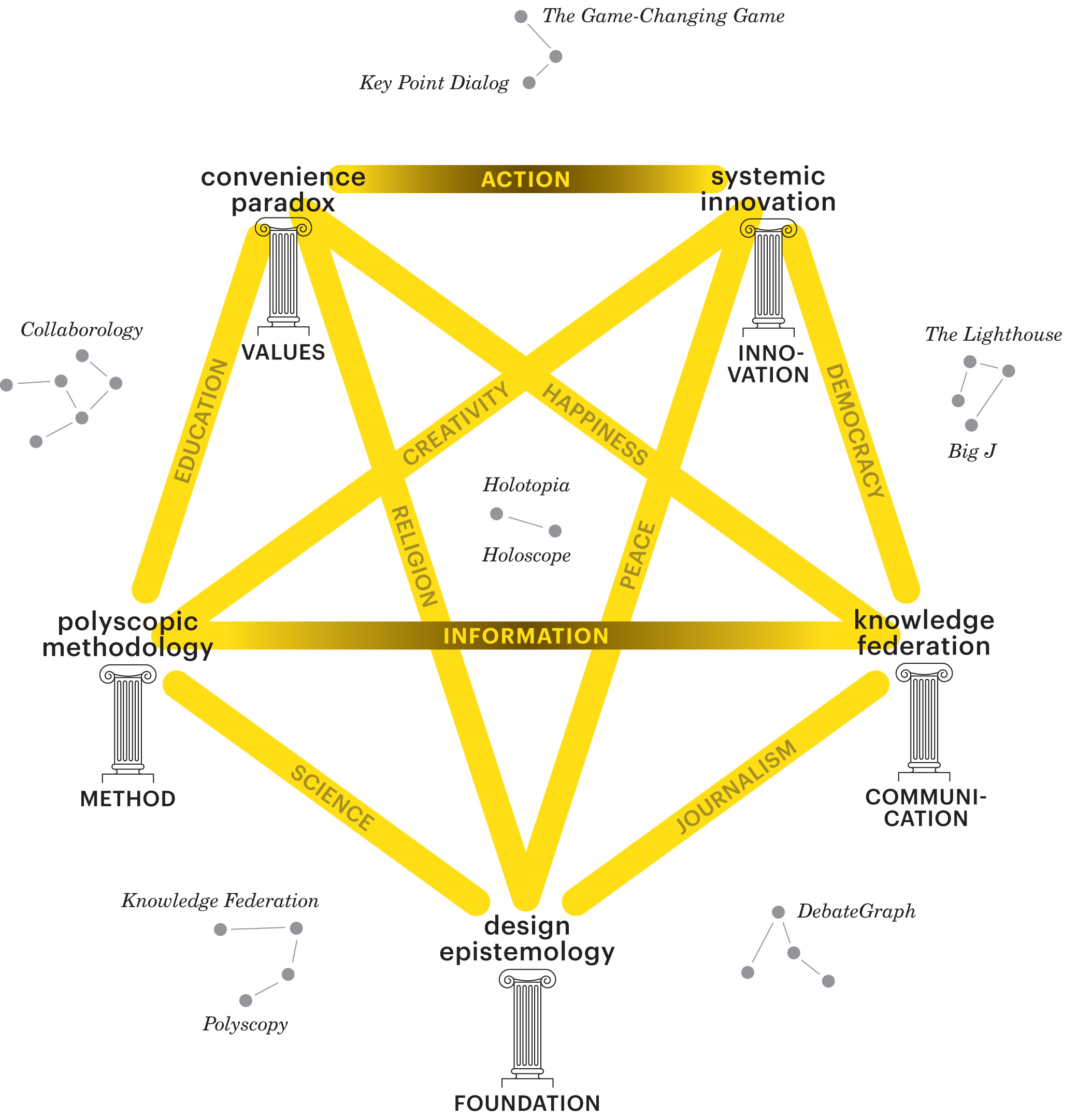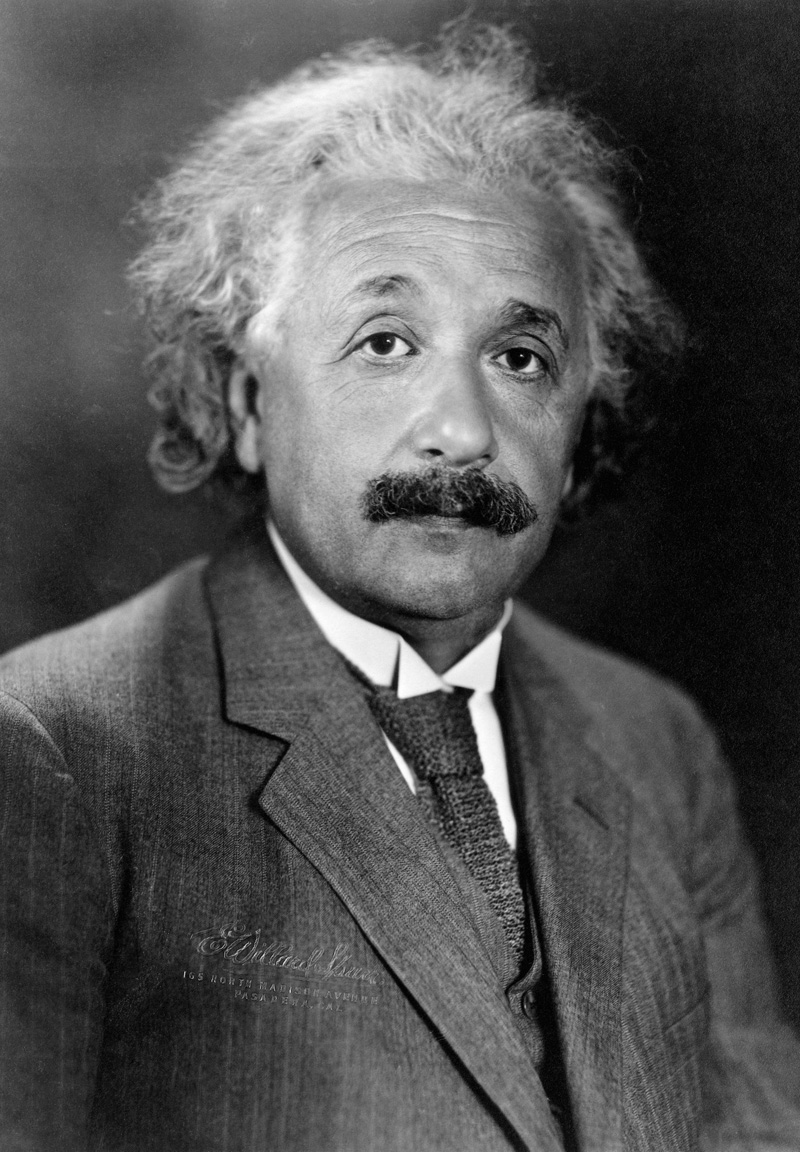IMAGES
Contents
- 1 Federation through Ideograms
- 1.1 Knowledge federation is a social process whose function is to connect the dots.
- 1.2 I use the word gestalt to pinpoint what the word informed means.
- 1.3
- 1.4 Modernity ideogram
- 1.5
- 1.6 Information ideogram
- 1.6.1 Knowledge federation is both the process and the prototype.
- 1.6.2 The (socio-technical) 'lightbulb' is created by federating knowledge.
- 1.6.3 Only coherent views can be comprehended.
- 1.6.4 It is those tools that determine whether the result of humanity's (information-related) efforts will be chaos—or a new order!
- 1.7
- 1.8 Holotopia ideogram
- 1.9
- 1.10 My point
- 1.11
Federation through Ideograms
(Neil Postman in a televised interview to Open Mind, 1990)
"[...] of people not having any basis for knowing what is relevant, what is irrelevant, what is useful, what is not useful, where they live in a culture that is simply committed, through all of its media, to generate tons of information every hour, without categorizing it in any way for you", Postman continued.
Knowledge federation is a social process whose function is to connect the dots.
And complement publishing and broadcasting by adding meaning or insights to overloads of data; and by ensuring that insights are acted on.
Among various sorts of insights, of especial importance are gestalts; of which "Our house is on fire" is the canonical example: You may know all the room temperatures and other data; but it is only when you know that your house is on fire that you are empowered to act as your situation demands. A gestalt can ignite an emotional response; it can inject adrenaline into your bloodstream.
I use the word gestalt to pinpoint what the word informed means.
Our traditions have instructed us how to handle situations and contingencies by providing us a repertoire of gestalt–action pairs. But what about those situations that have not happened before?
Knowledge federation uses ideograms to create and communicate gestalts and other insights. An ideogram can condense one thousand words into an image; and make the point of it all recognizable at a glance; and communicate know-what in ways that incite action.
The existing knowledge federation ideograms are only a placeholder—for a variety of techniques that will be developed through artful and judicious use of media technology.
Modernity ideogram explains the error that is the theme of this proposal.
Modernity ideogram
By depicting our society as a bus and our information as its candle headlights, Modernity ideogram renders the gestalt of our contemporary condition in a nutshell.
Imagine us as passengers in this bus—as it rushes at accelerating speed toward certain disaster; I imagine it already off track, struggling to dodge trees; and that dodging trees is its only way to choose directions.
Modernity ideogram points to the fundamental root of this error.
Nobody in his right mind would design this vehicle; surely the people who created it must have simply reified the source of illumination they had as headlights, without giving it a thought.
In One Hundred Pages for the Future, in 1981, based on a decade of The Club of Rome's research into the future prospects of mankind, Aurelio Peccei—this global think tank's leader and co-founder—concluded: “It is absolutely necessary to find a way to change course.” How can we possibly change course while our 'headlights' are as they are?
Information must intervene between us and the world.
And between us and our choices; and not just any information—but information that has been conscientiously designed for its pivotal function (I qualify something as pivotal if it decisively influences our society's evolutionary course; and as correct if it corrects it).
In Guided Evolution of Society, in 2001, systems scientist Béla H. Bánáthy federated relevant academic sources, and concluded in a genuinely holotopian tone:
“We are the first generation of our species that has the privilege, the opportunity, and the burden of responsibility to engage in the process of our own evolution. We are indeed chosen people. We now have the knowledge available to us and we have the power of human and social potential that is required to initiate a new and historical social function: conscious evolution. But we can fulfill this function only if we develop evolutionary competence by evolutionary learning and acquire the will and determination to engage in conscious evolution. These are core requirements, because what evolution did for us up to now we have to learn to do for ourselves by guiding our own evolution.”
Modernity ideogram points to this new communication challenge we are facing—to foster "evolutionary competence"; and the "will and determination to engage in conscious evolution" to begin with.
Knowledge federation prototypes "evolutionary guidance".
Or metaphorically—the society's new 'headlights'.
Information ideogram depicts the (principle of operation of the socio-technical) lightbulb.
Information ideogram
What do we need to do to correct this so ugly error?
Improving the candle won't do; that will never lead us to the lightbulb! So we must first of all design the process; and (you may need to reflect for a moment to see why) this process must include a prototype.
Knowledge federation is both the process and the prototype.
The Information ideogram depicts (the 'lightbulb' or) information (what it needs to be like to provide us evolutionary guidance) as an “i” (for "information"), composed as a circle or dot or point on top of a rectangle. Think of the rectangle as (representing) a multitude of documents; and the point as the point of it all; then you may interpret this ideogram as a way to say the obvious—that without a point, a myriad of printed pages are point-less!
The information "i" is inscribed in a triangle representing the metaphorical mountain; which you'll easily comprehend if you think about rising above those 'trees' and the proverbial "information jungle"—in order to see where the roads lead and which one we need to follow.
The (socio-technical) 'lightbulb' is created by federating knowledge.
As one would do to create the lightbulb, or any other technical object—we first identified the function or functions this new object will need to serve; and then federated the relevant sources—to find out what the thing that suits the function needs to be like. I'll illustrate a broad variety of sources we've consulted by a single one—the Object Oriented Methodology. And here too (as I always do in the Liberation book) I'll highlight the main points by sharing a vignette.
When the first computers appeared on the market, and people saw the potential of this new machine, ambitious software projects were undertaken—which often resulted in chaos: Thousands of tangled up lines of "spaghetti code", which were impossible to comprehend and correct. The solution was found in the creation of "software design methodologies"; among which the Object Oriented Methodology constituted the solution of choice and a landmark. Ole-Johan Dahl (who co-created the Object Oriented Methodology with Kristen Nygaard, and later received the Turing Award—the equivalent of the Nobel Prize in computing—for this work) wrote (with C.A.R. Hoare) in Structured Programming in 1972, in a chapter called “Hierarchical Program Structures”:
“As the result of the large capacity of computing instruments, we have to deal with computing processes of such complexity that they can hardly be understood in terms of basic general purpose concepts. The limit is set by the nature of our intellect: precise thinking is possible only in terms of a small number of elements at a time. The only efficient way to deal with complicated systems is in a hierarchical fashion. The dynamic system is constructed and understood in terms of high level concepts, which are in turn constructed and understood in terms of lower level concepts, and so forth.”
Think again of "information jungle"; and imagine it as an enormous mess of documents—all mixed up together; imagine the mountain rising from it and above it as a structure of viewpoints; each of which offers a coherent view (you can bend down and inspect a flower; or climb up the mountain and see the valley below; but the nature of our vision is such that we cannot see both at once).
Only coherent views can be comprehended.
If computer programs are to be comprehensible, reusable and modifiable—they need to be structured in a way that conforms to the limits of our intellect, Dahl and his colleagues found out; and created the Object Oriented Methodology as a way to enable the programmers—or to even compel the programmers to achieve that; by programming in terms of "objects".
The creators of Object Oriented Methodology considered themselves accountable for the tools they gave to programmers; at universities, we too must become accountable—for the information tools we gave to researchers! And to the people at large!
It is those tools that determine whether the result of humanity's (information-related) efforts will be chaos—or a new order!
I adapted the idea of the "object" and drafted the information holon; which is what the Information ideogram depicts. Arthur Koestler coined the keyword "holon" to denote something that is both a whole and a piece in a larger whole; and I applied it to information.
The information holon is a structuring template and principle; it is composed of a manageable collection of coherent 'side views', which compose the rectangle (and allow us to see a subject matter 'from all sides'); which together allow us to see and justify (or 'prove') a point—on a still higher level of generality.
The mountain is technically the information holarchy; it is composed of information holons—so that the points of a more detailed holons serve as dots to be connected to compose those more general or high-level ones.
You may now comprehend knowledge fedration as the process of distilling insights or points from the 'information jungle'; and rendering them as information holons—to be readily comprehended and verified; and combining them into information holarchy—to enable us to collectively rise above 'the information jungle' and comprehend things clearly.
Holotopia ideogram shows what we'll see when proper light's been turned on.
Holotopia ideogram
Holotopia is the vision that resulted when we used 'the lightbulb' to 'illuminate the way': We chose five pivotal categories (five factors that decisively influence our society's evolutionary course); and for each of them collected and organized what's been academically published or otherwise reported; and condensed it all to a general point or insight. Those five categories are:
- innovation—our technology-augmented capability to create and induce change
- information—which by definition includes not only written documents, but all other forms of heritage or recorded human experience; and also the social processes by which information is created and put to use
- foundation—on which we develop knowledge and culture at large; which by definition includes the principles and the criteria we use to decide what we'll collectively rely on and live by; and what in our heritage is worth preserving and developing further
- method—by which we create knowledge, and distinguish knowledge from belief
- values—which direct "the pursuit of happiness" and our other pursuits.
The Holotopia ideogram comprises five pillars, each of which has a pivotal category as base and a point or insight as capital; think of a pillar as elevating us above "information jungle", so that we may comprehend a factor that determines our society's evolutionary course clearly and correctly.
A general insight resulted from the holotopia experiment.
Whenever we applied knowledge federation to a pivotal category, in each case the resulting insight toppled the "conventional wisdom"—by showing that the way the category is ordinarily comprehended and handled needs to be thoroughly revised and reversed; and that the effect of each of those reversals will be a dramatic improvement of our overall condition, personal and social.
The resulting five points or five insights elevate our comprehension of the world and our situation as a whole; so that when other similarly important themes such as creativity, religion and education are considered in the context of those five points—their comprehension and handling too ends up being revised and reversed; and we added ten themes to this ideogram—represented by the edges joining the five insights—to illustrate that.
Furthermore, the courses of action or reversals those five insights point to turned out to be so inextricably co-dependent, that making one of them necessitates that we make them all; or in other words—that making any of the obviously necessary improvements of our condition necessitates changing this condition, or technically the paradigm as a whole.
Each of those five reversals turned out to be a special case of this general principle:
Make things whole.
Which I can now offer you as holotopia principle—the simple rule of thumb pointing to a requisite new way in which we need to direct our creative efforts; and the resulting new evolutionary course and its corresponding 'destination' or order of things or paradigm.
To be able to make things whole we need to see things whole.
So I now offer you see things whole as the holoscope principle—the rule of thumb pointing to a new and informed (creation and use of) information.
I can now invite you to take one more step up the metaphorical mountain—and consider this general conclusion:
We are not informed.
What we have—regarding any of the core themes of our lives and times—is not knowledge but belief.
As soon as we substitute the 'lightbulb' for the 'candle', and knowledge for belief—our comprehension and handling of life's core issues will be radically transformed.
And result in radical improvement of our condition.
The holotopia experiment showed that (not "success", nor "profit", but) making things whole is the direction we need to follow; that (not self-centeredness and competition, but) collaborative self-organization is our—and everyone's—enlightened interest.
The stars in the Holotopia ideogram represent prototypes—which are the results of this enlightened course of action. Prototype are the knowledge federation technical tool that enables us to put the make things whole principle into practice; to turn insights into action and action into real-life effects, and concerted change.
– A new type of thinking is essential if mankind is to survive and move toward higher levels.
(Albert Einstein in an interview to The New York Times, 1946)
My point
It stands to reason that thinking "inside the box"—within the confines of our habitual and institutionalized patterns of thought and action, which (as Max Weber diagnosed at the point of inception of scientific study of society) keeps us confined to "the iron cage" of dysfunctional and obsolete institutions or systems (of which the system of information, our society's 'candle headlights', is the example at hand), which I'll designate as conditioned—won't do the job. The "liberation" in Liberation book's title is, of course all-inclusive or comprehensive—just as wholeness and holotopia, its results, are; but to make things simple you may just as well see it as the liberation of the mind from conditioning—which is the key to comprehensive liberation.
"The tie between information and action has been severed", Neil Postman warned in his keynote to German Informatics Society titled "Informing ourselves to Death", in 1990; the liberated mind is that tie. But the information we have today cannot liberate the mind; because it cannot be turned into action. The information that will liberate us and empower us must be different in outlook and structure; it must be created by a social process that is different from all institutionalized processes we have—as the holotopia experiment so convincingly confirmed.
It is "widely known" that this liberating sort of information was what Plato undertook to foster when he created Academia; so I turned academia into a keyword, and use it to designate "the institutionalized academic tradition"; in order to point out that what we've institutionalized is not what this tradition's founding fathers had in mind.
But this is not my point.
I am not telling you how the world is—but acting in a new way; and inviting you to act. Because ironically—as long as we use our old and dysfunctional processes and systems to communicate and act—we remain part of those systems; and hence also part of the problem!
The error I am proposing to correct is an error of self-perception.
We've been taught to see ourselves as "objective observers"; and that "our job" is to report what we see in conventional publications; we need to see ourselves as actors caught up in a dysfunctional system—and liberate ourselves and update our system by self-organizing differently; so that academia can give its key contribution to continuing our culture's evolution; as it did in Galilei's time.
I invite you to partake in restoring the severed tie between information and action.
In this precarious moment of transition from one stable order of things to another, which has been called the Information Age, information is the transformative power and critical resource that we scientists, we academic researchers, can and must be accountable for; which we must use to empower all of us to be accountable for the viability of our species; and to continue our culture's evolution.
You and I will truly begin to communicate when you'll no longer see me as trying to convince you of something—but as handing out a missing pieces of the puzzle that is yours to solve.
My point is not to tell you how the world is or how to correct it. I am not here to describe anything but to act, and I'm inviting you to act; so that together we may foster the social process and be the social process that will supply the information we the people vitally need; the information that will restore vision to post-industrial democracy; and allow culture to continue evolving.
